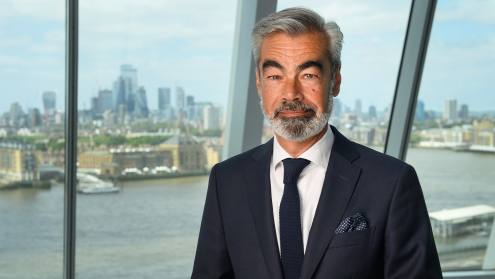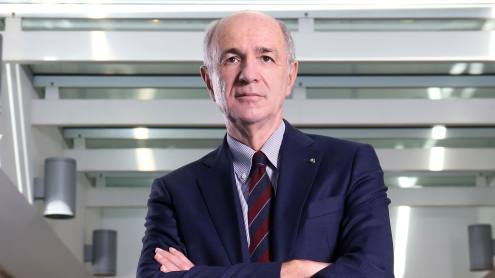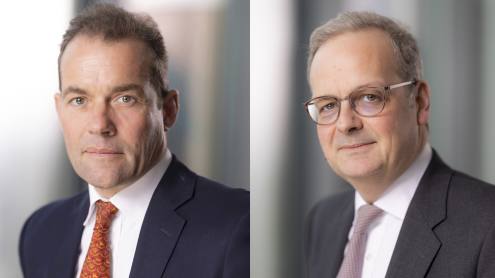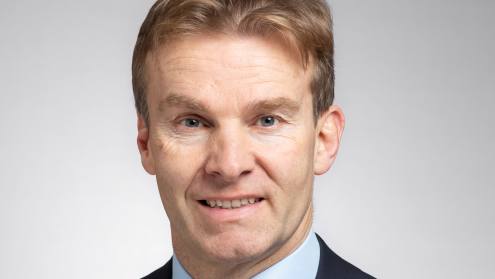The growth of so-called “blank cheque companies”, or special purpose acquisition companies (SPACs), has been one of the most eye-catching — and controversial — features of equity markets in recent years. It led to lurid headlines about alleged fraud and reported losses of $4.8bn among retail investors between early 2020 and April 2022. While they boomed during this period, activity has since dropped off as markets have cooled and scepticism about the structures has grown.
SPACs are investment companies that have no specific business operations but go public via an initial public offering (IPO) with the expressed aim of merging with private firms to take those businesses public, a process known as a “de-SPACing”.
Career history: Patrick Galley
2019 CEO and chief investment officer (CIO), RiverNorth Capital Management
2004 CIO, RiverNorth 2002 Vice-president, global corporate investment bank (GCIB), Bank of America
2000 Associate, GCIB, Bank of America
1997 Analyst, GCIB, Bank of America
By merging with a SPAC, the private company effectively becomes listed without having to go through an IPO. Some SPACs have a specific company or sector to target, while others do not. In 2020 and 2021, as the gap in valuations between public and private markets grew, there were 861 SPAC listings in the US, accounting for more than half of all IPOs. But high-profile failures of post-SPAC companies, not to mention market conditions, have contributed to the decline of the era known as “the SPAC fad”. New issues this year are in the lowish double figures.
But this has not deterred RiverNorth, an investment management company specialising in “opportunistic strategies in niche markets”, to try its hand in the sector.
“What RiverNorth does is essentially take advantage of fear and greed in the marketplace,” says Patrick Galley, RiverNorth’s chief executive and chief investment officer. “Sometimes that fear and greed leads to inefficiencies that we are able to exploit. The market was trending towards greedy before. Now it’s going towards fearful, and we are able to take advantage with a contrarian mindset. It’s behavioural finance more than anything, looking at the true discounts and premiums.”
Pick a strategy
Mr Galley is responsible for RiverNorth’s overall direction. He joined the company in 2004, having previously been a vice-president at Bank of America (BofA) covering asset management. When he joined RiverNorth, it was a small registered investment advisor, but in 2004 it started trading closed-end funds (CEFs). These regulated vehicles trade at a premium or a discount to their net asset value, and during his time at BofA Mr Galley became intrigued by the structures and how they worked.
Originally planning to start his own business, he joined RiverNorth and helped change its focus to CEFs. RiverNorth launched a dedicated mutual fund to trade CEFs. Mr Galley says it is now probably the largest institutional investor in the space, with $5bn assets under management, across CEFs as well as other investments.
“CEFs can have any strategy: fixed-income, equities, municipal bonds, sub-asset classes,” he says. “There are about 450 on the New York Stock Exchange [NYSE] with $250bn in assets. If you buy one trading at a 10% discount and that narrows to 5%, you outperformed the underlying assets; it doesn’t matter what the underlying assets do.”
Mr Galley and RiverNorth were early movers in the SPAC market, starting investments in 2015, attracted by the structure’s similarities to CEFs. RiverNorth invests at the pre-merger stage, with no desire to own the operating company. Its strategy is to invest in SPACs at IPO, then either benefit from the rise in value when the SPAC merges with the private entity it is to take public, or take the cash back if no merger happens. Mr Galley describes RiverNorth’s enhanced pre-merger SPAC exchange-traded fund as seeing a “straight line as you’d expect from a cash portfolio, but with a little pop once in a while”.
“SPACs are cash sitting in a trust until it goes through an IPO,” he says. “They often trade at a discount to the cash, sometimes at a premium, so it’s very similar to how we think about a CEF. It’s a portfolio of cash, you don’t have to worry about the underlying assets, and you have an equity option if the company makes a good acquisition or just announces something the market likes. This gives an option to sell at a premium to the cash value. But if it doesn’t trade up, you can take the cash back. It’s a risk-less trade; the cash-like return if there is no merger is the downside.”
As Mr Galley points out, the equity option has become less attractive over the past year due to the weakness of the IPO market and equity markets as a whole. That contrasts with 2021 which saw “the other extreme — SPACs were trading at a huge premium to their true value”.
Mr Galley underlines the fact that private companies that go public via SPACs are not themselves SPACs, correcting a public misconception.
He takes the view that the more subdued market of the past year, rather than being a slump in SPACs, represents a return to normality. There were 22 SPAC IPOs on the NYSE in the year to mid-September, the lowest number for five years, but not far off the rate seen in 2017, when there were 34 in the full year.
No joke
SPACs would go public and be five times oversubscribed because investors were paying just to get access to a private company, even if they did not know much about it. The capital would immediately go into another SPAC. According to Mr Galley, the retail market’s appetite was so great for them that investors paid more than $10 a share for the $10 sitting in the stock.
“I’d go for lunch with a friend in, say, tech, and they’d be talking about SPACs,” Mr Galley continues.
He is relaxed about the criticisms levelled at SPACs in recent years. Further Global Capital Management managing partner Olivier Sarkozy told a Financial Times conference in 2022 that “the SPAC market was a joke in my view”, while former US Securities and Exchange Commission (SEC) official John Coates has accused SPAC promoters of engaging in “deep fraud”.
“Whoever says that SPACs are a joke is only looking at a short period of time — the 2021–22 vintage of SPACs — and I’d agree that that period was a joke as people were willing to pay a huge premium for cash, which is kind of silly when they didn’t even know what the valuation was going to be,” Mr Galley says.
He observes that one downside to the structure is that SPAC sponsors — the initiators of the process, who bring in the initial capital — typically receive 20% of the outstanding shares of the listed SPAC. This usually means that the SPAC structure will need to generate a higher valuation to make the enterprise worthwhile for investors. It also makes a SPAC merger more suited to high-growth private companies worth between $500m and $2bn, rather than smaller businesses, or larger ones that will prefer a conventional IPO. Despite this, Mr Galley expects SPACs to endure.
“It’s a relevant and efficient option for companies that want to go public, as the wrapper is already trading; it’s more efficient than traditional IPOs,” he says. “The public-to-private premium is important. You don’t see many companies going public now, and maybe the premium is inverted, but if that premium expands, that’s when the SPAC wrapper really makes sense. I don’t think it’s going to go away.”
A change in the rules
Through this year, the SEC, the market regulator, has been proposing and rolling out tighter new rules on SPACs. The changes include more stringent disclosure and procedural requirements, and aligning rules governing de-SPACs more closely with traditional IPOs.
The rules have caused a degree of disquiet among some operators in the SPAC market. Law firm Sidley Austin said that they have “the potential for a compliance and implementation meltdown”, and that the SEC’s stance disregards legitimate industry and investor concerns. Mr Galley does not share these concerns, and says the changes are likely to enhance confidence in SPACs, thus benefitting SPAC investors like RiverNorth.
“I don’t think it’s a bad thing to have more regulation as far as disclosure goes, making SPACs a bit more akin to traditional IPOs and making sure that investors know what they would be owning post-merger,” he says. “They aren’t trying to change the structure of the SPAC itself; they are more concerned about investors owning the publicly-traded company post-IPO. It arguably makes the post-merger market more credible.”
Mr Galley’s confidence reflects his outlook on the markets, and RiverNorth’s ability to capitalise on them. “What motivates me when I wake up in the morning is knowing that the market is not going to become rational every day consistently going forward. There will always be pockets of fear and greed across the globe,” he says. “And maybe it’ll be a greedy day or a fearful day.”







